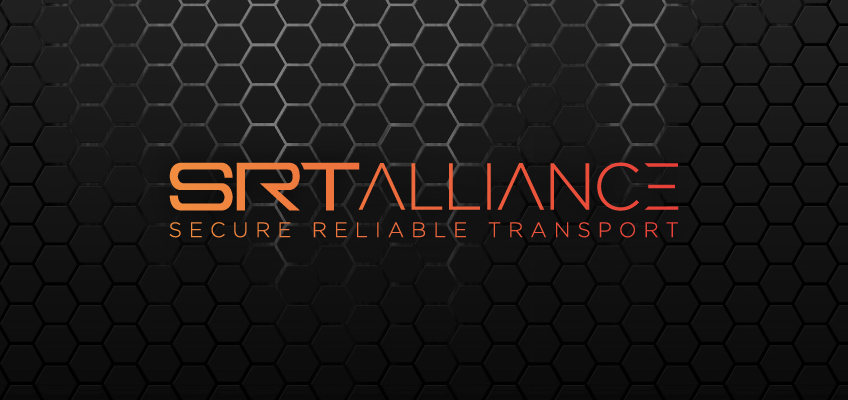It has been just a few short months since the formation of the SRT Alliance, an open-source initiative that is changing the way that video is streamed over the internet.
With technology originally developed and made available as open source by Haivision, the SRT Alliance now counts 70 members that have jumped on board to help ensure that high-quality low-latency video is available to anyone who wants to stream it. Earlier this week, we announced that Kaltura has joined our ranks along with more than 30 broadcast and streaming companies.
Since NAB 2017, the momentum of open source SRT has really taken off so we thought we should take a moment to look at SRT in depth here, and get into how and why it was developed. We’ll learn why it’s so important right now. And we’ll answer the burning question: why is SRT open source.
So read on and find out the history of SRT, where it is, and where it’s headed (maybe with your help via the SRT Alliance)!
So, what the heck is SRT?
SRT is short for Secure Reliable Transport. It’s a technology package and protocol that connects two endpoints or serves as a contribution feed for the purpose of delivering high-quality, reliable, low latency video and other media streams across unpredictable networks, including the public internet. That’s it in a nutshell. Read here for a more in-depth definition of SRT.
Check it out on GitHub here.
SRT optimizes streaming performance across unpredictable networks with secure streams and easy firewall traversal, bringing the best quality live video over the worst networks accounting for packet loss, jitter, and fluctuations in bandwidth saving you time and money.
Pretty cool.
The beginnings of SRT
The first iteration of SRT appeared in the Haivision HaiGear Labs (our group focused on innovation and future video streaming technologies) at IBC in 2013. Early development was led by our senior director of core technology Marc Cymontkowski with input from our CMO Peter Maag and CTO Mahmoud Al-Daccak. They had all come to the realization that, in order for a video transport protocol to be truly successful, it needed to be able to send TS streams, not only within corporate networks but also between them.
There was a lot of research that went into looking into third party solutions, but none could cut it. That’s when a decision was made to develop our own protocol for low latency video transport.
Since Marc implemented public internet transport technology based on the UDT library in the past, he started doing some new tests. He had some ideas on how to bring the latency all the way down but that required low level network programming. So we pulled in one of our great video experts at Haivision who added a functionality for fast packet retransmissions. He then added an encryption he had designed before in products that actually achieved DCP LLC approval.
A couple of experiments were done with the new solution but the quality wasn’t convincing in low latency cases. Marc believed he knew why. One of the most important features of SRT is its ability to recreate the low level timing of the input signal from the output/receiver side which is critical especially for VBR streams.
That did the trick and a ton of optimizations followed; rewriting of the whole packet retransmission functionality, mechanism for stream reshaping, and our encryption protocol; and then SRT was born.
Why does the world need SRT?
Studies suggests that humans now have an attention span shorter than a goldfish – clocking in at less than 9 seconds. And the attention span is even WORSE for online viewers. According to Limelight’s (an SRT member, by the way) State of Online Video study, “video buffering remains the top frustration with online video viewing, with almost half of online viewers abandoning a video if it stops playing to re-buffer more than twice.”
For live streaming, it’s not only critical that your video performs well but at the lowest latency, or you’ll lose viewers.
Overcoming today’s low latency video streaming challenges usually means spending A LOT of money on reserved links like MPLS or satellite networks, not to mention the time it takes to set up your network, the annual contracts, scheduling, downlink provisioning and ensuring stream traversal with no firewall issues.
Wouldn’t it be great if you could just use the network you have, like the public internet? Yes, absolutely, and SRT makes it possible. SRT ensures low latency, and secure video delivery from one point to the other, over lossy networks, unreliable connections and public internet.
When you’re watching something live, is it really live? Have you ever watched a live stream online and it starts fast forwarding to catch up on words? Whenever you stream live, all sorts of problems can start to pop up; bandwidth fluctuations, jitter, packet loss, latency, etc.
Traditional broadcasting protocols like UDP would rather drop than wait, and RTP is just insensitive to packet loss. SRT won’t leave you sacrificing resolution or latency; it lets you have it all so you can successfully deliver secure low latency video over any network.
Why use SRT over other protocols?
When competing against other protocols in any internet delivery system, one has to consider the end results of each. Here are your options, in a nutshell.
Via TS-UDP w/FEC – Stay fast, but risk accidents: It gives you limited packet loss recovery and is poor with jitter resulting in choppy, blocky, reordered video leaving you scratching your head wondering what you just missed, or screaming at your computer “this game cheats!”
Via HLS/RTMP over TCP/IP – Arrive later, stay safe: Offers typical 5 to 30 seconds of latency (average backhaul contribution is less than 500ms) and has potential for TCP congestion which means you might lose your audience’s attention span while your stream is trying to figure out if everything has been received for transmission.
What’s the end result of using SRT?
Aside from the fact that it’s free and results in lots of savings, the end result is a secure, reliable form of video transport over unpredictable networks. SRT uses a highly accelerated packet retransmission algorithm to ensure packet loss recovery and low latency delivery of your asset.
With video and audio stream recovery, firewall traversal, AES 128/256 bit encryption, and network performance detection (packet loss, latency, jitter), SRT allows you to be proactive and have more control over your stream between endpoints.
Ready to learn more about SRT? Check out the webinar below and see how you can achieve low-latency, reliable video streaming with Secure Reliable Technology!


